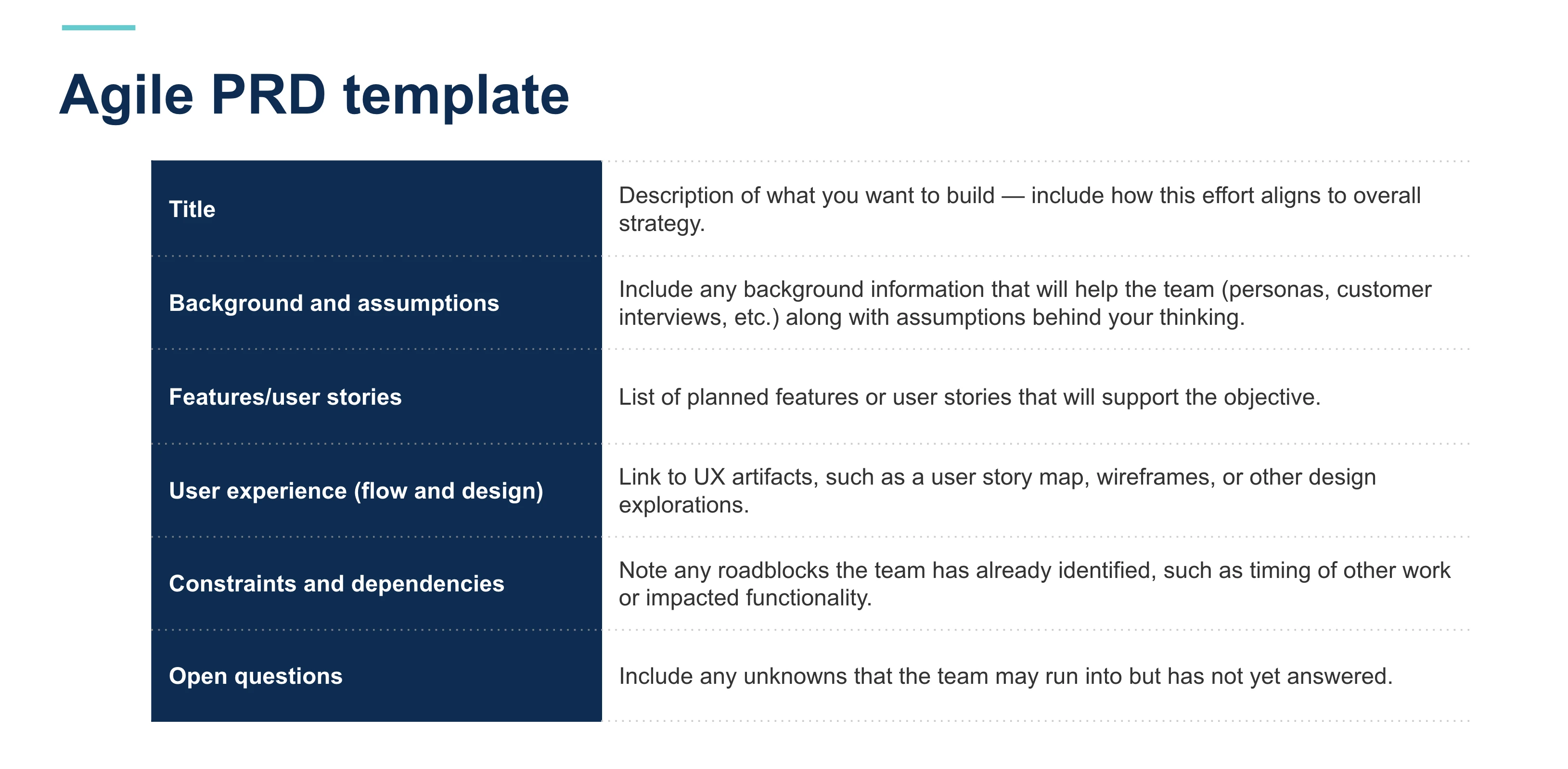4 product requirements document (PRD) templates for product teams
Learn the fundamentals and try free PRD templates
Last updated: November 2025
Product requirements documents (PRDs) have pros and cons, but they are still a popular way to define feature details for development. Explore how to write a product requirements document in 10 steps and access free PRD templates to try. |
A product requirements document (PRD) defines what you are building, who your product is for, and its purpose. It outlines the features and functionality your offering must have in order to provide value. PRDs guide teams through development and launch so they can bring products to market that meet customer needs.
There are still some industries like healthcare where comprehensive PRDs are beneficial and even required. But today, most product development teams choose leaner versions of the lengthy PRDs of old.
No matter what type of organization you belong to or documentation you create, we all have to define what it is we are building and give stakeholders needed insight. If you use Aha! software, there are multiple ways to manage your PRDs. You can capture them in a shareable note template or embed requirements directly in work items on your product roadmap. You can also use the downloadable Excel, PowerPoint, and Word formats found in this guide.
Read on to learn what goes into a great PRD, access a PRD template, and get best practices to help you write clear, actionable requirements. Use the following links to jump ahead to a specific section:
What is a PRD?
A product requirements document is a resource for product managers to define what a new feature or product should do. A well-structured PRD ensures that engineering, design, and stakeholders are aligned before development begins.
Using a PRD template helps teams streamline the process, ensuring consistency and clarity across projects. The right PRD should clearly outline the problem, goals, features, and technical requirements — so that teams can make informed decisions and build efficiently.
Try our PRD template — sign up for a free trial.









